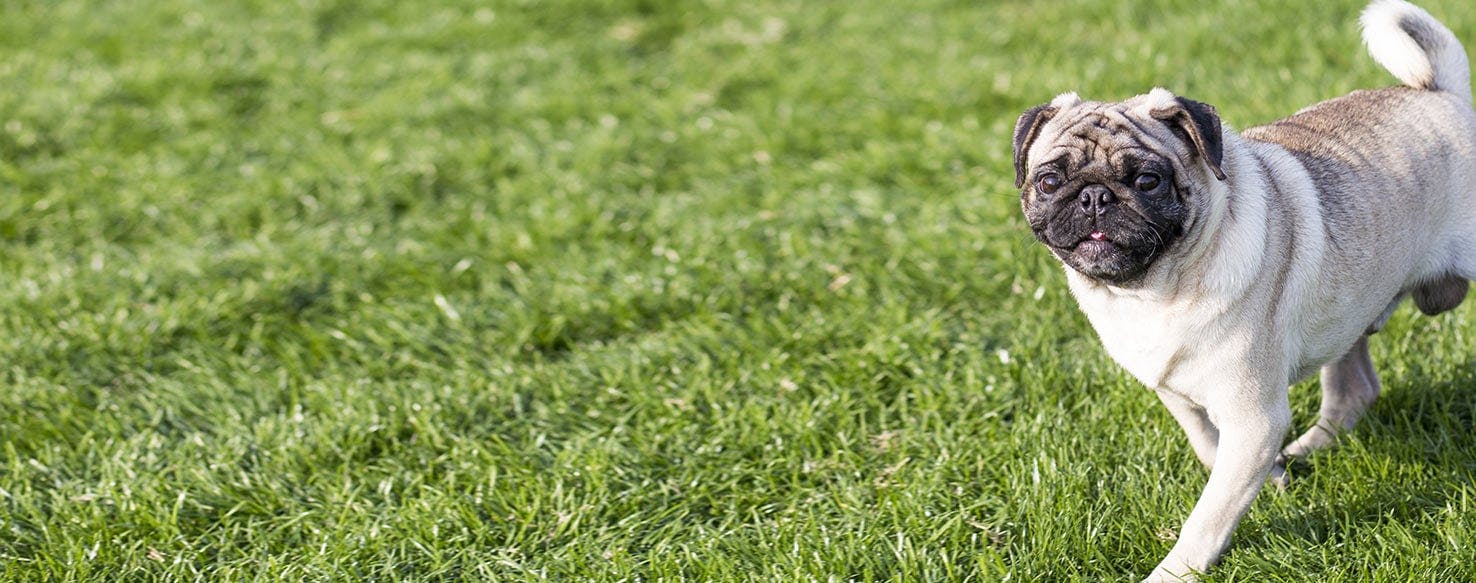- Home
- The Daily Wag!
- Behavior
- Why Do Pug Dogs Snort
Why Do Pug Dogs Snort

Common
Normal
Introduction
If you are a Pug owner, you have inevitably heard them snort before. As a matter of fact, it is something that a lot of Pug owners really appreciate about the breed. This is a type of behavior that is directly related to their biology and physical features. So what exactly makes the Pug snort? Is it an accident of evolution? A defense mechanism? A form of communication, perhaps? While these are some great guesses, it really is a combination of factors that lead to such an adorable behavior. Read on below to get to the bottom of why your Pug may be snorting.
The Root of the Behavior
Pug anatomy is the most obvious cause of this behavior. It is clear just by looking at a Pug that they have a very different "setup" on their face than say a German Shepherd or a Labrador. The shortened snout and flattened faces commonly seen on Pugs and English Bulldogs is referred to as a brachycephalic type of face. This means that your dog's upper respiratory system is shortened, as well as nasal passage. This can easily cause breathing difficulties, which will often result in your dog snorting or snoring. Another facet of this is that your Pug's soft palate and throat can dry out and become irritated.
Because of these issues, many Pug owners encounter what gets commonly called reverse sneezing. Reverse sneezing is actually a muscle spasm that veterinarians refer to as paroxysmal respiration or pharyngeal gag reflex. These can be quite scary for an owner who hasn't encountered it before, as it almost appears as if your Pug is gasping for air. Oftentimes, their eyes will also widen given the impression that their feeling fearful. As they struggle through these spasms, they may extend their neck and heave their chest. This is often mistaken for a seizure, but in reality is a fairly normal part of their reaction. These spasms usually last up to 2 minutes in length and aren't normally a major issue.
Surprisingly, in large part, these spasms are related to seasonal allergies, as well as irritants such as household cleaners and perfumes. Canine nasal passages are extremely sensitive to scents of a normal nature, so when they're hit with high strength odors it can put them into overdrive. Because of the shortened nasal passages on Pugs, this can be especially troublesome for them to just "shake off." If you notice that these spasms hit immediately before the seasons change, or when you are only cleaning with certain products, take note. These are clues that could potentially help you lessen the frequency of your Pug's spasms.
Need advice about your pet's health?
Get answers fast from a veterinary professional 24/7 in the Wag! App.
Get Vet ChatEncouraging the Behavior
Your Pug's snort could also be indicative of emotional behaviors. A lot of pet experts agree that Pugs will often use their additional "sound palates" to express certain emotions they may be feeling. You may have experienced similar traits in other dog breeds. The most common of these is the doggie "sigh." Pugs have such a different mouth as nasal structure that they're physically incapable of making some of these types of noises, so instead, they compensate with their own sets of snorts and snarls. Creating an environment that makes life easier on your Pug's breathing isn't all that hard. They flourish in environments with a lot of air flow, so opening up your windows and keeping fans around to circulate air is great. If they have access to outdoors, even better!
Keeping dehumidifiers running is another great idea. Even with their sensitive palates, Pugs suffer more from humid environments than dry ones. The additional moisture can aggravate their salivary glands, and create mucus buildup that makes it even harder for them to breathe. Heat is another issue for Pugs. Past roughly 80 degrees Fahrenheit, the breed has a tendency to retain water which in turn aggravates their sensitivity to moisture. Providing them with wading pools, or keeping them within air conditioned environments will easily solve this problem.
Other Solutions and Considerations
On occasion, a Pug will be born with nasal and respiratory issues so severe that it requires surgery to correct. This isn't nearly as frightening as it may sound. The surgery tends not to be very invasive, and involves opening up the dog's respiratory passages to aid in easing their breathing issues. Recovery time tends to be between two and three weeks. Infections are unfortunately something that Pug owners need to be concerned with on a regular basis. Because of the folds and creases surrounding a Pug's nose and mouth, there exists ample area for bacteria to settle themselves into and wreck havoc. Regularly cleaning these folds can be the difference between a 5 minute solution and surgery.
Conclusion
So what can you take away from everything discussed here? Well, for starters, Pugs are born snorters. That's just the way it's always going to be. And if they're generally happy and healthy, there's no issue with this behavior whatsoever. But remember to keep in mind that your Pug snorts for a variety of reasons, and if he's not feeling so well, you might have found a "snort circuit"!
Written by a Pug lover Shane Langenfeld
Veterinary reviewed by:
Published: 03/29/2018, edited: 01/30/2020
More articles by Shane Langenfeld
